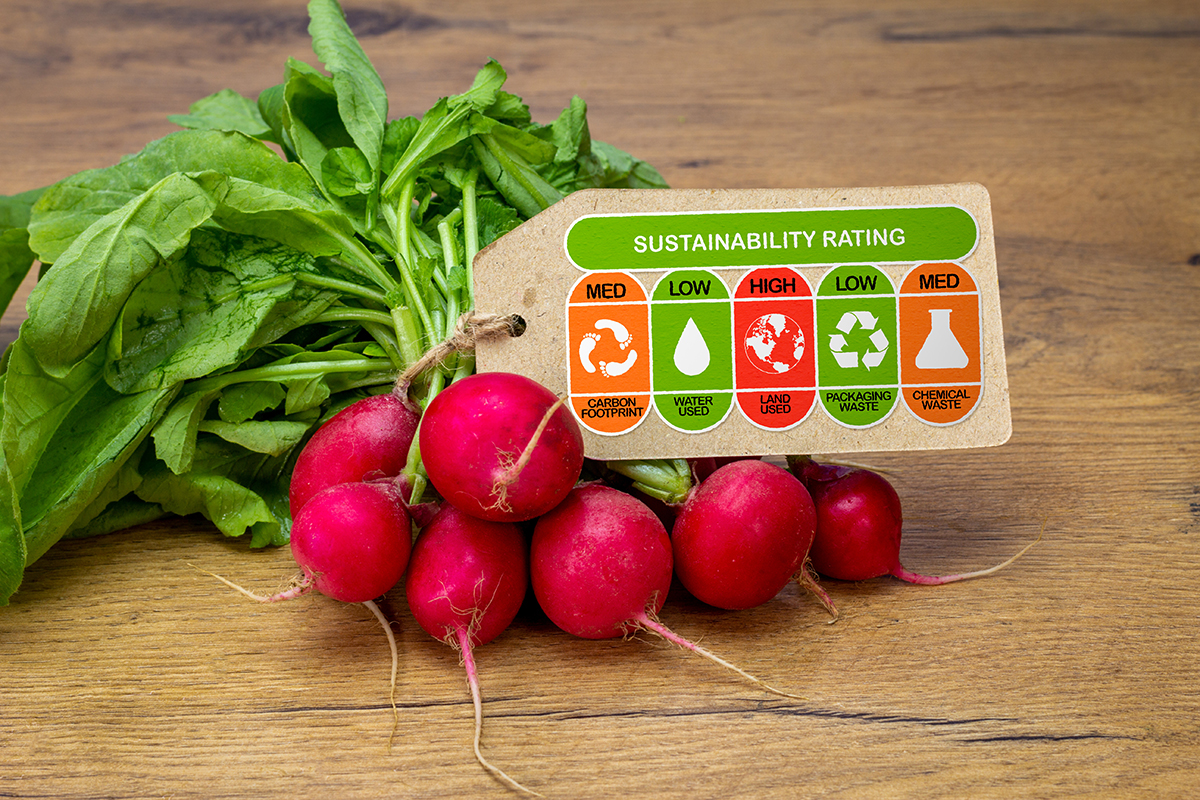
How sustainable are new processing technologies?
The answer to this question depends on both the product and the sustainability criteria that are emphasised. All six technologies discussed here can increase the shelf life of food, thus reducing food waste. Below is a discussion of each technology including the advantages and disadvantages associated with the environmental and climate-related sustainable development goals.
Direct link to sustainability information about the technologies:
Microwaves | High pressure | PEF | Ultrasound | UV-C light | Plasma-activated water
Microwaves for pasteurisation and sterilisation
The biggest environmental benefit of using microwaves for pasteurisation and sterilisation is that only the food is heated by the microwaves. In other words, one does not need to heat the equipment, process water, steam etc in order to transfer the heat to the product. In traditional autoclaving, as much as 40% of the heat can be used on heating equipment and process water, but this varies. When microwaves have been used for drying, the energy savings have been in the range of 30 to 40% compared to air dryers.
Microwave equipment uses electricity as its energy source. This is in contrast to machines that use steam (autoclaves, pasteurisers). The rapid heating also means that the equipment has a short operating time in relation to production volume. However, the products and magnetrons in the microwave equipment must be cooled, and how well this heat is utilised has an impact on energy consumption.
Like other pasteurisation and sterilisation, the products can gain a very long shelf life so that there is potentially little food waste compared to fresh produce. Sterilised products can be stored at room temperature without having to use energy to refrigerate. When cooling, water can be used, but air cooling is not uncommon.
Not all types of packaging materials can be combined with microwaves. However, it is not necessary to use materials that are water resistant on the outside. This means that the possibilities of finding more environmentally friendly materials than plastic are present.
| Advantages | Disadvantages |
|---|---|
| Less waste: Greatly extends shelf life and thus reduces food waste | Kvalitetsforringelse: May cause unpredictable heating and overheating |
| Less energy: May be more energy efficient than other methods of heat treatment. Electrical. | Krever vann: Cooling water is involved in the process |
| Better health: Can preserve more vitamins better than other heat treatment methods due to rapid heating. Applies especially to vegetables. | |
High pressure processing
The method’s main advantage is that it extends the shelf life of food and preserves some of its fresh produce characteristics. This especially applies to fruit and vegetable products. High pressure can therefore reduce food waste for products that are difficult to preserve in other ways.
Under high pressure, water is often compressed to achieve the extreme pressures involved in this type of processing. Compressing 1 litre of water to 400 MPa requires only one tenth of the energy needed to heat a litre of water from 45°C to 50°C. Therefore, high pressure processing can be very energy-efficient in relation to pasteurisation with heat. Water is usually used as a pressure medium, and can be reused over time so its consumption will be much lower than most types of heat treatment, except for some microwave systems.
Finding alternatives to plastic as a packaging material can be challenging. This can limit sustainable choices, so one must be aware when choosing the type of plastic packaging in order to reduce the climate footprint.
| Advantages | Disadvantages |
|---|---|
| Better health: Preserves nutrients in the process and during the storage of food. | Energy-intensive: The build-up of pressure during processing and the construction of the equipment is particularly energy-intensive |
| Less waste: Extends shelf life and thus reduces food waste | Expensive equipment: Complicated equipment that is expensive in relation to production volume |
| Better quality: Preserves food quality | |
Pulsed electric fields (PEF)
PEF uses high voltage, but still has modest energy consumption. PEF can be used on many raw materials and makes them easier to process. It can provide savings on equipment used for slicing, cutting and peeling vegetables and potatoes, which are significant enough to justify investment in PEF equipment. These equipment savings are also good for the environment and reduce food waste.
In addition, PEF enables energy savings when drying and frying because it helps remove water. When PEF is used for pasteurisation, mainly for liquid products, it is possible to achieve energy savings compared to heat treatment.
Overall, PEF is considered to be a useful and sustainable technology that is on the rise.
| Advantages | Disadvantages |
|---|---|
| Less energy: Reduces energy consumption for products that will be deep fried or dried | Expensive equipment: Additional pretreatment equipment that results in additional costs |
| Less wear and tear on equipment: Provides savings on slicing, cutting and peeling equipment. | |
| Less waste: Can extend the shelf life of foods somewhat and thus reduce food waste somewhat | |
Ultrasound
Ultrasound is used in many industries for cleaning surfaces. The use of ultrasound can result in reduced use of chemicals, thus leading to lower emissions.
Combined with other technology, ultrasound can be used in freezing, thawing, drying and heat treatment processes. Such combinations have the potential to reduce energy consumption for these technologies. For example, when freeze drying, up to a 70% reduction in energy consumption has been reported.
| Advantages | Disadvantages |
|---|---|
| Less waste: Can extend shelf life somewhat and thus reduces food waste | Rarely used alone, thus sustainability perspectives must be considered when using additional technologies. |
| Less energy: Requires less energy than processes such as homogenisation and heat treatment | |
| Better health: Can preserve nutrients better than other technologies | |
| Lower emissions: Cleaning with less use of chemicals |
UV-C light
UV-C light is a well known method of disinfecting the surfaces of equipment that are in contact with food, thereby reducing disinfectant emissions. Research on the effect that UV-C light has on the surface of meat products shows that this technology makes it possible to extend shelf life while using only small amounts of energy compared to other methods.
| Advantages | Disadvantages |
|---|---|
| Less waste: Extends shelf life somewhat and thus reduces food waste | Surface problems: suitable for smooth surfaces (not so well suited regarding uneven surfaces) |
| Lower emissions: Disinfection of surfaces without the use of chemicals |
Plasma-activated water
Plasma-activated water has the potential to reduce food waste and replace more energy-intensive preservation methods. The technology has not yet been commercialised, so no concrete experience has been gained. The environmental consequence of releasing used plasma-activated water is a matter that needs to be investigated. In addition, the health and toxicological aspects must be investigated.
Also read about the climate footprint when using plasma-activated water on spinach
| Advantages | Disadvantages |
|---|---|
| Less waste: Extends shelf life and thus reduces food waste | Health effects: Produces chemical compounds that are released into the air during production (e.g. ozone). This must be investigated |
| Less energy: More energy efficient than other preservation methods | The effect is influenced by water quality |
See also
For more detailed information regarding food waste, read this article about the relationship between reduction in food waste and climate footprint.
